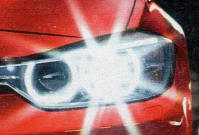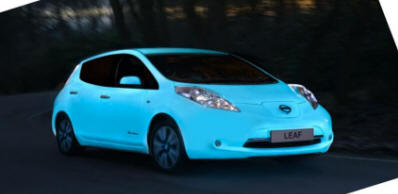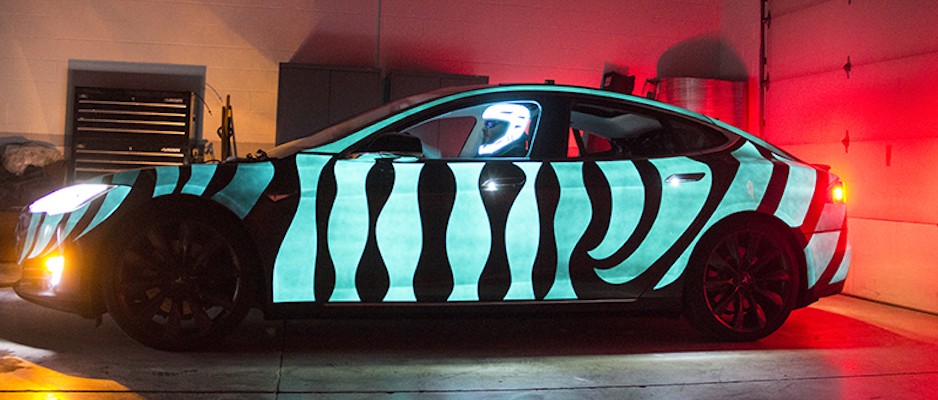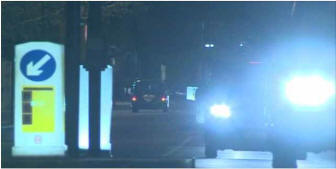Solutions ...
Interior lighting designers strive to shade the light source from an occupant's eyes to prevent discomfort.If an employer exposed staff to blinding light experienced on the roads, he would be prosecuted under UK and EU Health and Safety Laws.
BUT when life-safety is at risk auto manufacturers intentionally try to blind everyone !
Headlamps are intended to permit a driver to see with. In the 21st century it is archaic for vehicles use blinding High Intensity Discharge headlights to dazzle other drivers following 19th century principles when acetylene carriage lamps needed a reflector to produce enough forward light.
We don't have to suffer blinding lights simply to satisfy motor manufacturer's desire to out-dazzle each other in order to sell vehicles under the guise of safety, some solutions are offered here:
 Blinding Xenon Headlights - could be polarised |
This report by the AAA Foundation USA proposes using the well
known effects of
polarised light
to minimise headlight glare and
seems an eminently sensible solution
Countermeasures for the effects of reducing Headlight Glare AAA Foundation 2001 Mace, Garvey, Porter, Schwab, Adrian |
 Blinding LED Daytime Running Lights - could have a diffuser fitted Energy efficient, durable long life Organic LED (OLED) using electro-luminescent polymer films which can provide a safe glare free illumination with a maximum intensity of 200 candelas (about the same as a computer screen). Imagine all front and rear bumpers gently glowing or the whole vehicle outlined in OLED or electro- luminescent paint as Nissan and Tesla have done. |
 This Nissan Leaf is coated in electro-luminescent paint. The whole car is clearly visible with no dazzle.  A distinctive electro-luminescent Tesla |
Technical solutions:
1) Headlights:
a) Design: Recess dipped beam projectors inside the car wing sending out invisible light beams so the light source is never visible to other drivers
b) 'Blue-Blocker'-filters: to create light with less amount of short wavelength radiation would allow better contrast vision and reduced glare
c) Intensity-limitation: Yellow light intensity can be increased without the painful blue-light-side-effects (With yellow or Microscope-light eye-surgeons can operate much longer without risking irreversible retinal light damage)
2) Daytime Running Lights: Reduce the intensity to 200cd either electronically of use of diffusers
3) Rear Lights: Intensity limits need to be imposed ( there are none at present)
If the European Commission were determined to reduce accidents why have they not mandated:
#1 Advanced driving tests and regular re-tests?
#2 Eyesight tests at three year intervals?
#3 Low power Daytime Running Lights?
#4 Headlights which do not blind at night?




